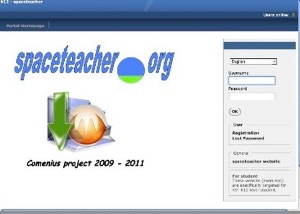Teacher: for e-learning sequence





Ideally: for e-learning sequence or website sequence:
For an e-learning sequence it is necessary that the students learn in the right order. The question is what is the right order. I have made a proposition. We will explain the scheme below. We also explain what should be included in a learning sequence. This is of course not typical for a e-learning sequence but general education.
We will start with a general homepage. Such as a nice picture and some words about biomass. There should be a start button to start the sequence. In the menu of the website there should be some buttons:
•forward and backward. If the students have completed reading/watching/making exercises he can click to the next page.
•site map: If the students can’t fulfill the whole sequence at once, they can “jump” to where they stopped earlier
•glossary. (see B below)
•Goals: Clicking on this buttons the student should see what the goals are for this project.
oThe student can form an opinion about using biomass as a renewable energy source
oThe student understands some technical words about biomass in English
oThe student can explain how biomass is produced
oThe student can explain what the financial en environmental aspects are about biomass and its production.
oThe student can explain why research is been done an by whom this is done.
oThe student can write a paper about how biomass can be a solution to climate change.
-
A.Introduction: In this introduction (biogas – an energy source of growing importance), there is a simple explanation about biogass. There will be some hotpotatoes exercises to check if the students understand this introduction.
-
B.Glossary: Because this is a difficult subject with (lots of) technical terms there should be a glossary. The difficult words on every page or vodcast should be link (like Wikipedia) to the glossary. If there is an exercise about a typical word (what does … mean?) this word shouldn’t be included into the glossary.
-
C.See A
D.Core: This is the main part of the sequence. Here the students will learn more about biomass. I have split this section into three parts: technical aspects, researching and economic/geographical aspects. After every aspect there will be a hotpot or other exercise.
a.Technical: Work from
i.Italy,
ii.Austria (biogas plant Wildon/Austria and wood gas plant Güssing/Austria),
iii.Spain
b.Researching: Work from
i.Belgium (part one),
ii.Netherlands (research)
c.Economics and geography: work from:
i.Belgium (part two and three)
ii.Austria (interview ECCRE in Güssing/Austria)
-
iii.Netherlands (financial costs and environment)
E.The third part of the sequence is the finalization. In this part the students have to relate everything learned before together. To introduce the final exercise the students have to complete two more exercises:
a.Why biomass (Austria)
b.Environmental impact (Austria)
c.Final exercise: write and illustrate how biomass can be a possible answer to climate change. Use all the things you’ve learned in these lessons. We ask ourselves in the beginning this question. It should also be answered. (in English or the students own language).


